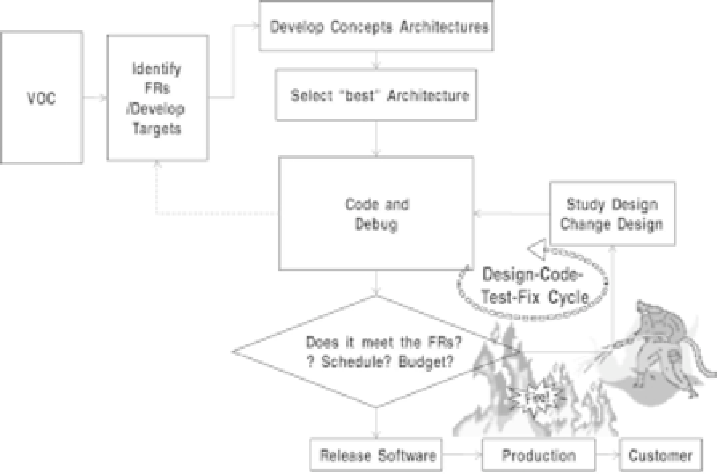Information Technology Reference
In-Depth Information
FIGURE 14.2
Software design-code-test-fix cycle.
containing 2.0-3.5 faults per KSLOC.
13
If the current process level does not
yield the desired software reliability, then audits and stricter process controls
are implemented.
None of these industry “best practices” are before the fact, leading the team and,
hence, their home organization to spend their time, effort, and valuable resources
fixing what they already designed as depicted in Figure 14.2. The team will assume
the role of fire-fighters switching from their prescribed design team. In these practices,
software design teams find that their software engineers spend more time debugging
than designing or coding, and accurate software reliability measurements are not
available at deployment to share with customers. We recommend that the DFSS team
assess their internal development practices against industry best practices to ensure
they have a solid foundation upon which to integrate DFR. To do so in a DFSS
environment, it will be helpful for a software DFSS team to fill in gaps by identifying
existing internal best practices and tools to yield the desired results and integrating
them with the DFSS road map presented in Chapter 11. A set of reliability practices
to move defect prevention and detection as far upstream of the development cycle as
possible is always the target.
Reliability is a broad term that focuses on the ability of software to perform its
intended function. Mathematically speaking, assuming that software is performing
13
KSLOC
=
1,000 source lines of code.


Search WWH ::

Custom Search